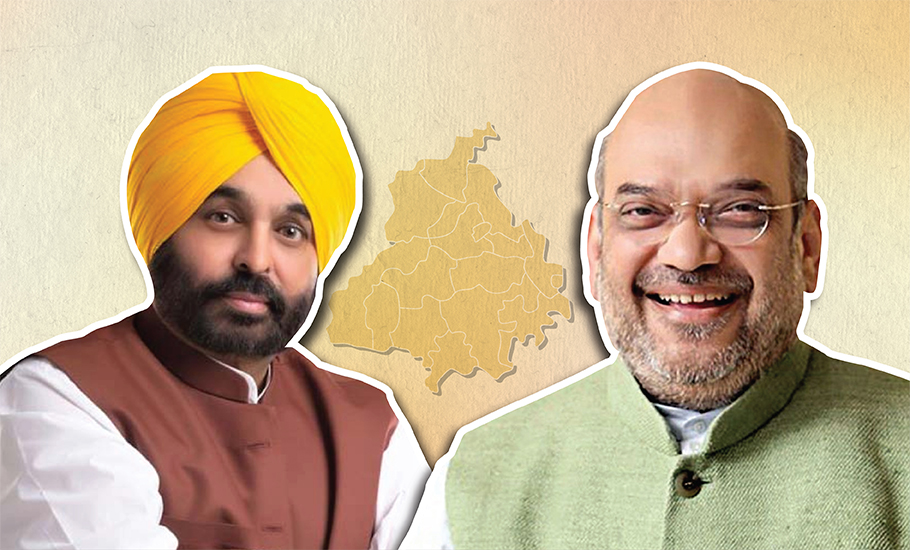
Capital row: AAP, BJP in pitched battle for Chandigarh

With Punjab Chief Minister Bhagwant Mann demanding the immediate transfer of Chandigarh to Punjab in a specially convened Assembly session, the battlelines between AAP and the BJP have sharpened further.
The immediate provocation for the AAP government’s resolution on Chandigarh was the change in Chandigarh administration service rules, coming into effect from Friday, April 1, announced by Union Home Minister Amit Shah last week. Till now, Punjab service rules were applicable to employees in the Union Territory, which serves as the capital for states of Punjab and Haryana.
What’s new from April 1
According to the new rules, applicable from April 1, the employees of the Chandigarh administration will be at par with Central government employees. The new rules include increase in retirement age from 58 to 60, two years of child care leave for women employees instead of one year given earlier, 30 earned leaves instead of eight earlier for school principals, and creating vice-principal’s post in schools.
Adding to the confrontation is the opening of Bhakhra Beas Management Board (BBMB) and some Chandigarh administration posts to officers from states other than Punjab and Haryana. Till now, the posts were filled in the 60:40 ratio by officers from Punjab and Haryana, respectively. The BJP, though, contests this arrangement and says 60:40 is not written in stone.
‘Infringement’ on Punjab’s claim
The BJP had, in 2016, also tried to appoint retired bureaucrat KJ Alphons as UT administrator, going against the traditional norm of the Punjab Governor holding the post. The appointment was put on hold after the Akali Dal, then a BJP ally, objected to it.
Also read: Mann slams move to offer Central govt benefits to Chandigarh staff
The Punjab government – in fact, all Punjab political parties – see the latest step as an infringement on the State’s claim to Chandigarh and going against the spirit of federalism. According to the Punjab Reorganisation Act, 1966, Chandigarh was made a Union Territory and the capital of Punjab and the newly created state of Haryana, which was carved out of Punjab in 1966.
History of the joint capital
Chandigarh, the first post-Independence planned city designed by French-Swiss architect Le Corbusier, had been the capital of unified Punjab since September 1953. Shimla temporarily served as the capital of Punjab till the building of Chandigarh was completed.
Since then, Punjab has always seen Chandigarh as its domain. Though the joint capital arrangement continued through the years, this sentiment always remained live. The latest salvo from the BJP government at the Centre has thus again brought the issue to the fore.
AAP also sees this as an attempt to check its increasing political imprint in the country following its sweep in the recently held Punjab Assembly elections. Last December, AAP had emerged as the largest party in the Municipal Corporation of Chandigarh, winning 14 of the 35 wards that went to the polls. The BJP, the dominant party in the previous board, was reduced from 20 to 12 wards.
However, during the Mayor’s election, with the Congress and Akali Dal abstaining, one Congress councillor defecting to the BJP and one AAP vote declared invalid, BJP’s Sarabjit Kaur won the post. AAP has disputed the mayor’s election and has gone to the Punjab and Haryana court, asking it to quash the election citing irregularities in the process.

